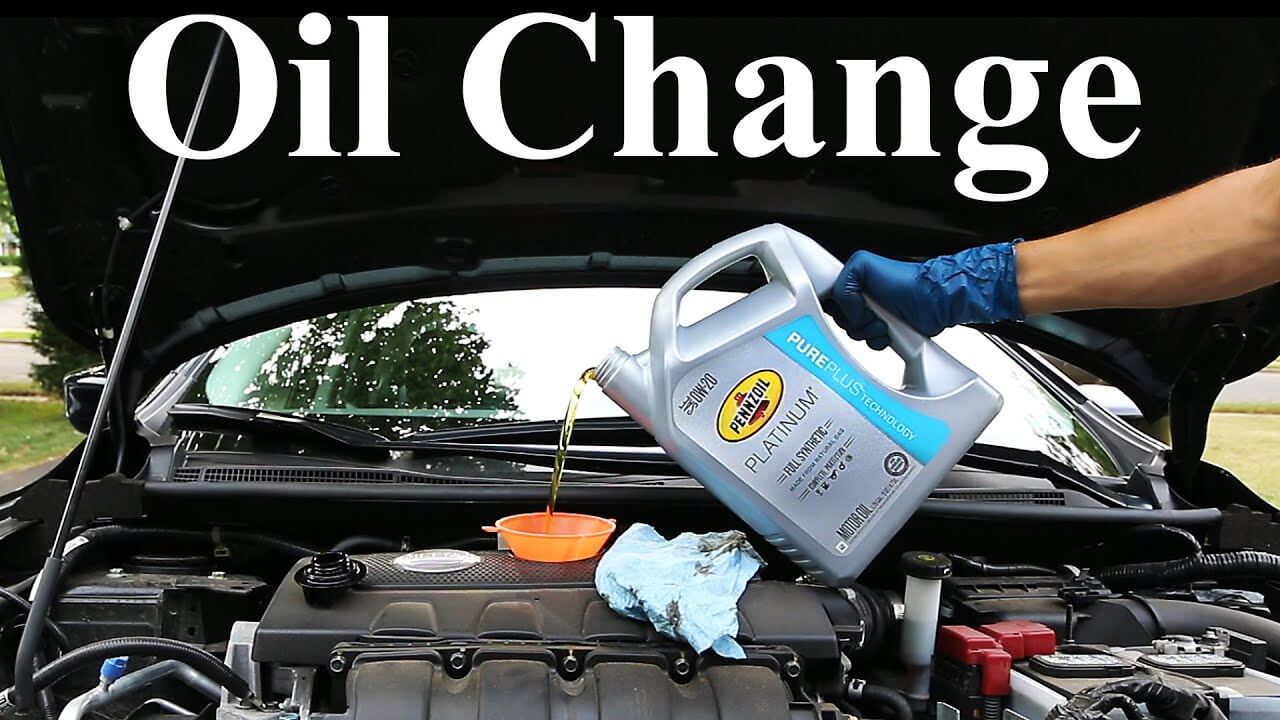You can save money by changing your oil and oil filter yourself unless your car’s oil filter and/or oil drain plug is impossible to reach. It simply takes being able to identify certain parts of the car and acquiring the right equipment to do the job You don’t need to be a mechanic– to learn how to change your oil. The oil change process involves a few steps including draining the existing oil out of your car engine, replacing the oil filter, adding oil, ensuring there are no leaks, and quality testing.
Check the oil and oil filter that is recommended by your car manufacturer
Before you get underneath your car there’s some key information you need first. You’re going to need to buy oil and an oil filter. In order to find out which specific oil types and filter units you’ll need to buy, you have to track down some information about your car including year, make, model, engine displacement size, oil type
Your car’s manual may have most of this information or your car may have a sticker on the inside that will tell you what type of oil you need for your car engine. The oil filter is a bit of a bigger problem, as there’s no standardized part naming scheme available for oil filters.
You’ll need to know the above information other than oil type know the type of filter you need. Most stores that sell oil filters have a book or computer that you can use to check out which part number you need from different part manufacturers. Once you’re sure you have the correct oil and oil filter, you’re ready to change the oil.
Grab Your Tools and Prepare the Car
Before you start changing your oil, make sure you have all these tools required during the process: car jack, jack stands, socket wrench, rubber gloves, old towel or blanket to catch loose oil, sturdy oil drain pan, oil, oil filter, funnel, paper towels.
Get rid of your junk car today: Old Car Removals Melbourne
Before you get your car up on a jack, it’s better to run your car for a minute to ensure that the oil in your car is warm. Your car must be turned off when you put it up on the jack, but if the oil is warm, it will flow out easier.
Your car probably came with a jack of some kind and in most cases, this should be enough to lift your car and work under it. If your jack cannot raise your car enough find a jack so you can place the oil drain pan under it and still leave you enough room to work.
Drain the Oil
The first thing you’ll have to do is drain your oil. Place the oil drain pan under the plugin of your car’s oil pan. You should be able to find a lone bolt called the drain plug. This can look different on various vehicles, so check your car’s manual if you’re not sure. Make sure that the oil drain pan is directly underneath this plug and can catch all the oil as it comes out of your car.
Place some rubber gloves on before you drain the oil. Once the oil starts flowing into the oil drain plan, let your vehicle drain the oil completely. Use a paper towel or a dry cloth to wipe off the inside of your vehicle and replace the drain plug.
Remove and Replace the Oil Filter
The next step is replacing the oil filter. While you remove your oil filter, some more oil will again come out of your vehicle, so be sure to place the oil pan underneath the oil filter. Oil filters come in a couple of different types. Some oil filters are in self-contained units that you can unscrew by hand. Other filters are made of paper for these you have to unscrew a cap and slide out the paper filter, replace the new one, and reseal it.
Refill the Oil
Once everything underneath the car is sealed, now you can refill the oil. Your car’s manual should tell you how much oil is needed in your car. Most oil jugs that you bought from parts stores also have a measure on their handle which you can use to see how much oil is left. To refill the oil, remove the oil cap from the top of your car engine. Place a funnel inside the hole. Begin pouring oil into the funnel until you’ve put the amount specified by your car owner’s manual.
Replace the cap and hand tighten it.
Once you’ve filled your car engine with oil, you can take off the jacks and turn the engine on. Start the car for a few minutes to cycle the oil through your system. After this use your dipstick to ensure that the levels are where they need to be. You can check this by pulling out the dipstick, wiping it off with a paper towel, re-inserting it, and pulling it out a second time. If the oil level on the dipstick is between the two dots on the end, you’re good to go.
